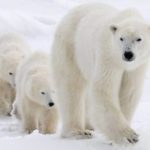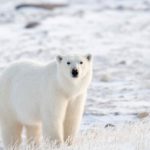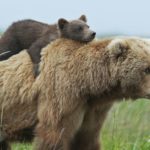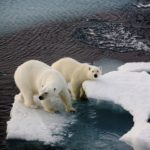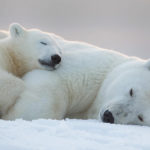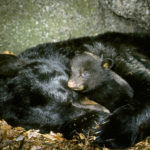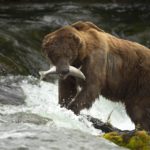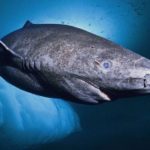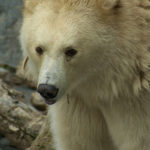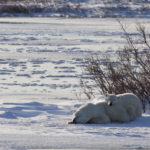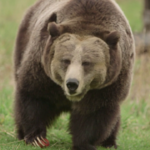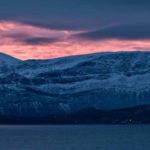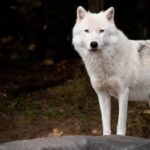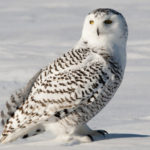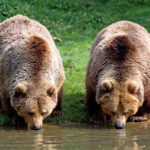Facts about polar bears
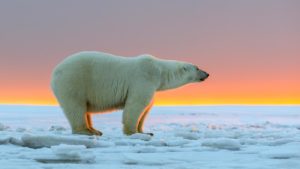 The white bear is winded differently: the northern bear, the polar bear, and the northern peoples call the nun or the oshkuj. Behind all these names lies a clever and resourceful predator who has managed to adapt and survive in such a harsh polar climate.
The white bear is winded differently: the northern bear, the polar bear, and the northern peoples call the nun or the oshkuj. Behind all these names lies a clever and resourceful predator who has managed to adapt and survive in such a harsh polar climate.
- To find out who the polar bear is, we suggest reading a selection of the most interesting facts about the polar bear.
- The polar bear is the largest warm-blooded predator on the planet. The weight of a polar bear can reach 1,000 kg, and a length of 3 meters.
- The closest relative of a polar bear is a brown bear. Both species originated from the same ancestor approximately 600 thousand years ago.
- Earlier in the Arctic lived another subspecies of polar bears – a giant polar bear. He was hilarious 1,200 kg and reached a length of 4 meters.
- The polar bear’s fur is very dense and has no pigmentation. Such a cover allows better storage of heat.
- The skin of a polar bear is black.
- The largest representatives of the population live in the Barents Sea, and the smallest in Spitsbergen.
- If you take a picture of a polar bear on an infrared camera, then the image will show only the tip of the nose and the vapor coming from it, and the bear itself will not be visible.
- The polar bear swims at a speed of 6.5 km / h.
- A record swim, over 600 km, was made by a bear, sailing along the Bosphorus from Alaska to pack ice in search of food.
- On land, a polar bear can reach speeds of up to 40 km / h. But it can not run for such a long time, because it is fraught with overheating.
- In hibernation for the winter polar bears fall on 50-80 days, and that not every year. Only pregnant females make lairs and fall asleep for the winter to lead offspring.
- Pregnancy of the female lasts 230-250 days, after which tiny bear cubs weighing 400-750 g appear.
- Polar bears are excellent swimmers. In order to swim well the bears even have swimming membranes between the fingers.
- Bears have an excellent sense of smell. To catch the smell of a seal that has got out on the ice, they can at a distance of 32 kilometers.
- Polar bears do not freeze, helping them in this thick subcutaneous layer of fat 13 cm thick.
- In the liver of a polar bear, a lot of vitamin A accumulates. If a person eats at least 100 grams of bear liver, he will die from an overabundance of vitamin A.
- Live polar bears about 25-30 years in the wild. In captivity, a record was recorded for the lifespan of a polar bear – 45 years.
- In the period of severe frost, when a polar bear goes to bed, he covers his nose with his paw, which serves as the only heat sinker.
- Female polar bears from the southern parts of the Arctic are raising their babies for two years, and females from the colder part are caring for their cubs for a year longer.
- The polar bear does not hunt penguins, because penguins live in the Southern Hemisphere of our planet, and polar bears in the North.
- Polar bear and Antarctica are incompatible things. Since the habitat of polar bears is only the Arctic, which is located in the Northern Hemisphere of our planet.
